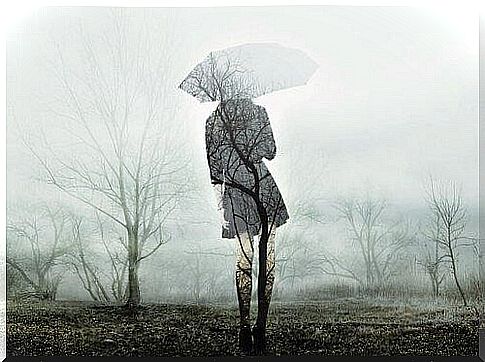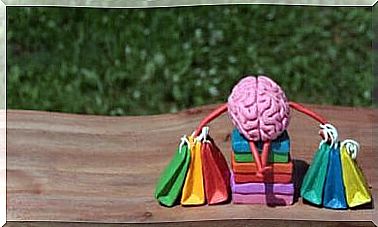Myths About Grief: Traps When We Have To Deal With A Loss

There is as much grief as there are important losses. We all go through that time differently. But as with other phenomena, there are also some myths about grief that need to be clarified. Especially because they condition the emotions that come with one’s grief.
Many of the things about grief that we have learned through life are made up of myths, which makes us vulnerable. By being aware that the pain of a loss does not weaken us, it can help us to accept this as something human, and adapt our reaction as something natural.
Myths about grief
Loss and all that comes with it is a condition of our lives. Nevertheless, we often misunderstand the grief that comes with a loss. Therefore, we need to take a closer look at these myths about grief that still exist in our collective consciousness:
You have to be strong
Let’s knock it down right away. Sadness is not a weak feeling. In order not to show a vulnerable face on the outside, we put on a mask while we are about to collapse on the inside. We make it so perfect that the empathy that flows into our encounter is inevitable. Therefore, people are less likely to want to help us.
Grief is like a depression
It is true that they both have many similarities, such as crying, deep sadness, apathy and isolation, but remember that grief is a normal reaction when one has lost something of value.

Grief only occurs when we lose a loved one
Grief is a normal reaction when we experience a loss in every way: a partner, a pet, health. It is all a kind of loss that can lead to a time of grief. Often, all of these ways of mourning are hidden and silenced, less recognized, more paralyzing.
Medication is needed to cope with the pain and tension associated with grief
It is not a disease that needs to be cured. The feelings one has in that regard are completely normal. In some cases, medication may be a choice, but the common symptoms are a sign that we need patience and sympathy.
It’s best not to talk about it
It is one of those myths about grief that can make us not help and support the bereaved. Friends think the best way to help is by avoiding the topic and getting the person to think about something else. In fact, people who have experienced a loss want to talk about it and tell others about their loss.
Other misconceptions of grief
Here are some other myths about grief as well as other common things that we hear under grief, but which we do not experience as often. However, they still exist:
- If you do not cry, then you do not really grieve over the loss. Crying is not the only way our body reacts when we experience a loss. Nor is it something that is necessary in the event of a loss. People can feel deep pain and show it in many other ways.
- Grief is a linear process. Many people write about “ordinary stages” in the process, but it is still something that is very individual.
- Grief and loss are the same. Grief is about our own experience and is our personal reaction to a loss. Missing is the external image of our grief, the social face we openly share with others.
- When death is “natural,” one cannot mourn. When someone who is old dies, it is more expected. But that does not mean that we can not grieve deeply over him.
- You have to see to move on. As we get used to mourning, we regain control of our lives, but the relationship with the one we have lost will always remain in our hearts and in our memory.
- The one who cries the most is the one who mourns the most. It is one of the very common myths about grief. But grief is not limited to sadness and crying. The process includes guilt, rage, fear, disappointment, etc. Times of joy and peace can also occur among the positive things.
- Time heals all wounds. Grief is an adapted reaction that never ends. We learn to live with it through time. Some emotions can return at all times when we think about what we have lost.

Other lies we picture ourselves in
- Fight fire with fire. Phrases like “there are other fish in the ocean” teach us that in order to move forward, we must put something in its place, but that is a big misconception. Compensation will not provide any relief in what we seek.
- It is best not to know the details of an accident or see the body of the deceased. Knowing the details that led to the death of a loved one can help us accept the reality of the loss and remove confusion. But it is true that in the “shocking” cases we must explain in words and with great caution what has happened.
- When you think you are seeing the deceased person, it means that you are going crazy or are in deep grief. In the beginning, it is quite common to see or sense the deceased person. It is important to be aware of these signals, and you should seek professional help if you need it.
- The more you loved that person, the harder it will be to get over it. There are no rules about the grieving process as it is a completely personal experience which depends on a lot of factors by the one who has lost, not just the love.
- The mourner must quickly return to their daily chores. The more busy, the better. It is good if the grieving person takes some time to reflect. A quick return to daily chores can cause pain so that the grief is not processed in a satisfactory way.
- Children are not able to understand death. It is best to deny everything and protect them from reality. Children quickly understand people’s emotions. To think they do not understand what is happening around them is a misunderstanding. It is important that children go through a period of grief just like the rest of the family.









